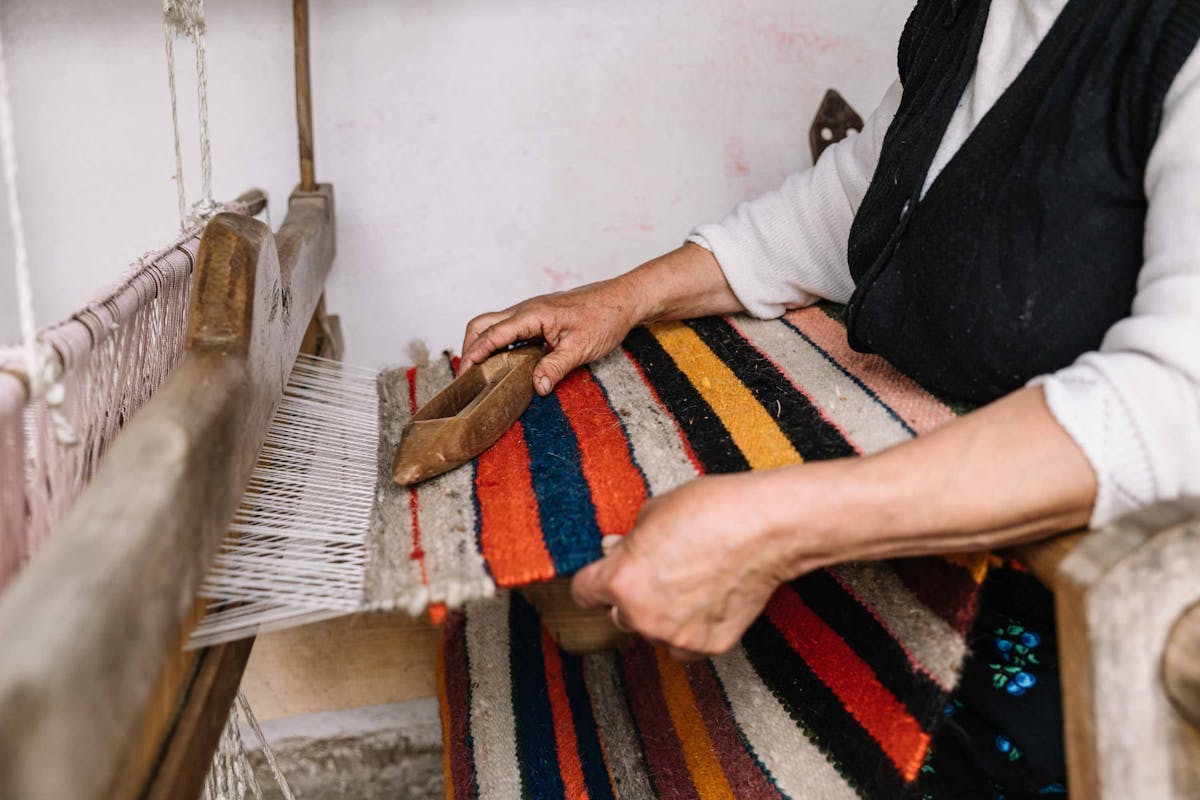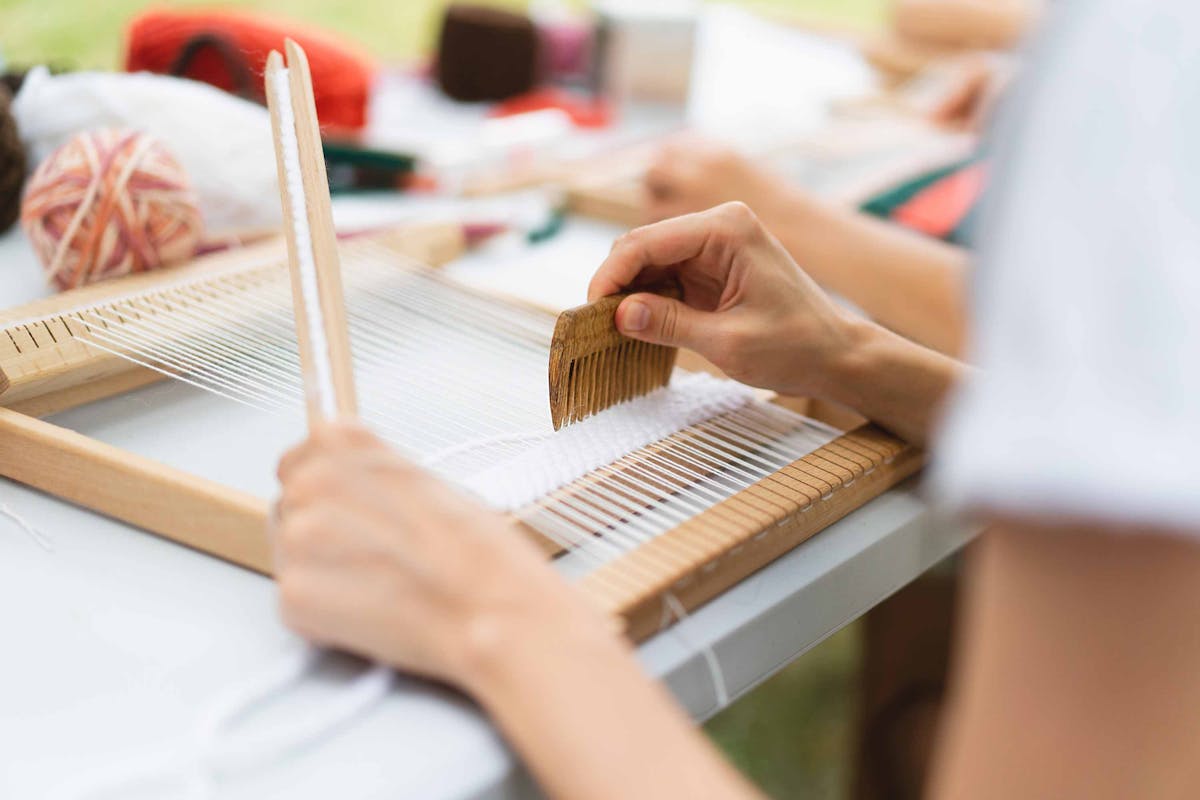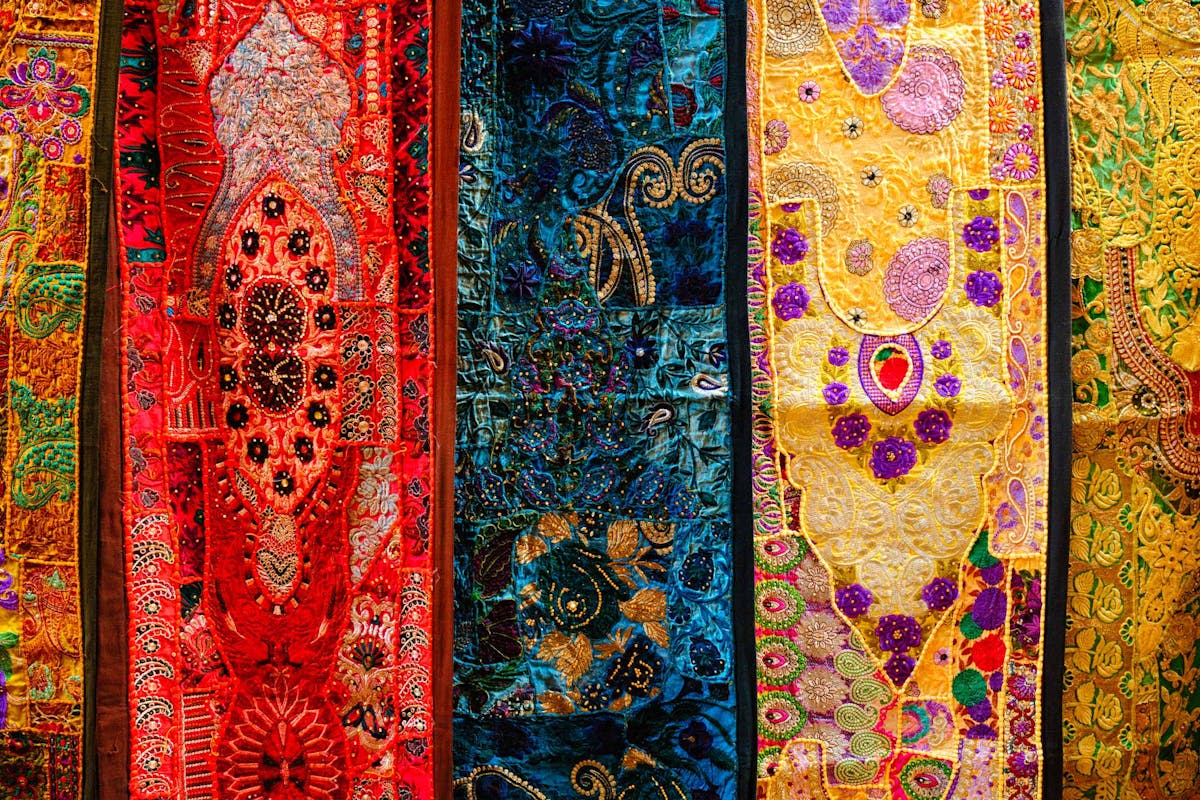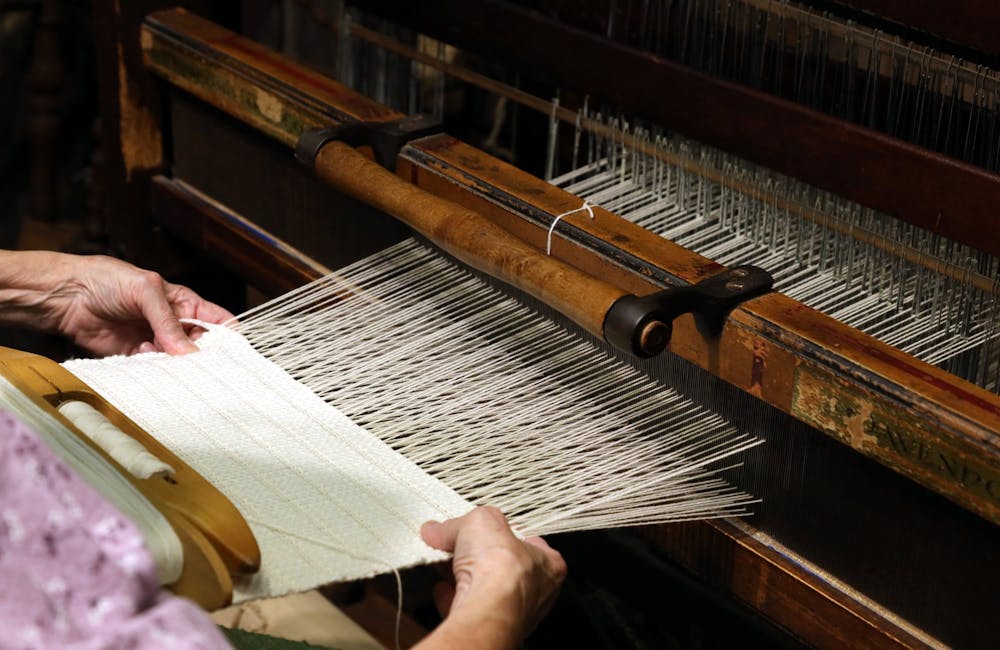If you don't have a background in textiles, you may just gloss over terms like woven, knitted, or bonded when looking for fabrics, and instead base your choice on the feel, drape, or stretch of them.
This approach to fabrics will usually work fine in a fabric store, however, when you are getting textiles manufactured (for example, by ordering clothing labels), becoming familiar with how fabrics are created will make it a whole lot easier to get exactly what you want.

The History Of Fabric Weaving
According to archaeologists, textile weaving has been done by all great civilizations, with some evidence of it dating back to the Paleolithic Era, some 30,000 years ago.
Other evidence shows that these early forms of weaving were done using plant fibers like hemp, palm leaves, and flax. By 2000 BCE, protein fibers like silk and wool were found to be commonly used among some cultures, particularly across Asia and The Americas.
Weaving was done using a basic loom that would make cloth of a fixed size and needed multiple people to operate. It is thought that many houses had their own loom, making just enough for their own household use.

What Is A Loom?
In its most basic form, a loom is a device used to weave cloth. It holds warp yarns under tension so that another yarn (the weft yarn) can be passed through perpendicular to the warp yarns.
The weaving loom has obviously undergone many changes and evolutions since its invention, but the process of interweaving yarns remains the same. It was during the industrial revolution that the loom became a piece of semi-automated machinery, called a power loom, capable of weaving much greater lengths of cloth, at much faster speeds, changing the future of textiles forever.
The next big advancement happened in France in 1804, when a patent was granted to Joseph Marie Jacquard for the jacquard machine. His invention was a piece of equipment that could be attached to a standard handloom or power loom, giving the weaver more control over individual warp yarns. This allowed for intricate patterns to be more easily woven in cloth, something that was once hugely laborious and left to skilled artisans.
His jacquard machine followed a series of punch card instructions. Those told the loom which individual yarns needed to appear on the upper surface of the cloth on each row, making patterns quickly appear out of different colored warp yarns.
The jacquard loom is still the gold standard for textile pattern weaving today. It has undergone a wee bit of modernization (namely computer automation), which allows complicated designs and small text to be effortlessly and accurately translated into fabric form. This is actually what we use here at Dutch Label Shop for all of our woven labels.
Basic Fabric Weaves You Can Weave On A Loom
Each different weave can greatly change the properties of a woven fabric. Some are stiff and hard-wearing; some are loose and floaty. Some create intricate and decorative patterns in the fabrics, and some are purely functional and no-fuss. Below are a few of the most common weaves that make up a majority of today's woven fabrics.
- Plain Weave
- Basket Weave
- Twill Weave
- Satin Weave
- Jacquard Weave
- Dobby Weave
- Crepe Weave
- Oxford Weave
- Waffle Weave

What Are The Properties Of Woven Fabrics?
Though the exact properties of woven fabrics can vary greatly depending on the type of fiber and specific weave used, some things remain the same. Woven fabrics are generally stronger and more hard-wearing than knit fabrics, and offer much more stability.
Weaving textile designs offer distinct differences from printing designs onto fabrics in many ways too. Fabrics like damask, brocade, jacquard, tartan, and ginghams are all woven to match a design, so the design will never wear off the surface. One way to tell whether a design has been printed or woven is to flip the fabric over to show the underside. A woven patterned fabric will show the same pattern or an inverse of it on the back, compared with a printed design which will just be the flat color of the base cloth.

Weaving Clothing Labels
The term woven in this instance refers to how your design is made into a fabric clothes label. The entire label is woven from scratch using different colored yarns that match your designs colors, with the design appearing on the surface of the label in the same way a larger piece of jacquard cloth is made.
This is different from another common type of label; a printed label. A printed label has the design printed onto the surface of a plain piece of already woven fabric, like satin ribbon. This might seem like an easier way to do it, but each method has its own distinct benefits.
Woven labels have an obvious advantage in that the design can’t wear away or rub off like it can with a printed label over time. They also have a slightly thicker, more luxurious hand feel, and as the design is made using yarn and not ink, it will have more of a luster. The surface of a woven label also has more texture. By looking closely, you can see the individual weaves that make up the label. This gives it added dimension compared with the flat surface of a printed label.













